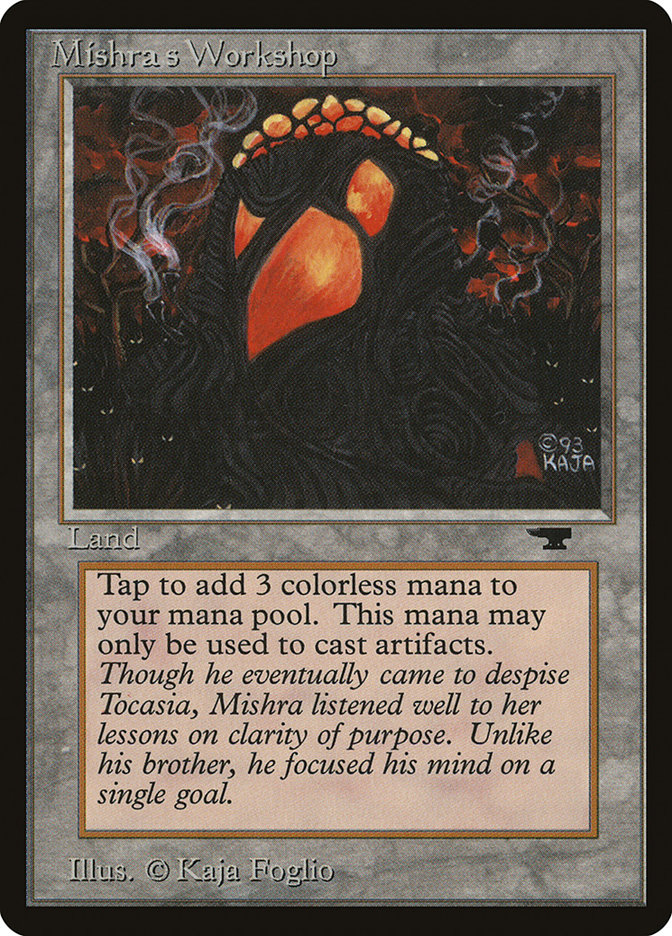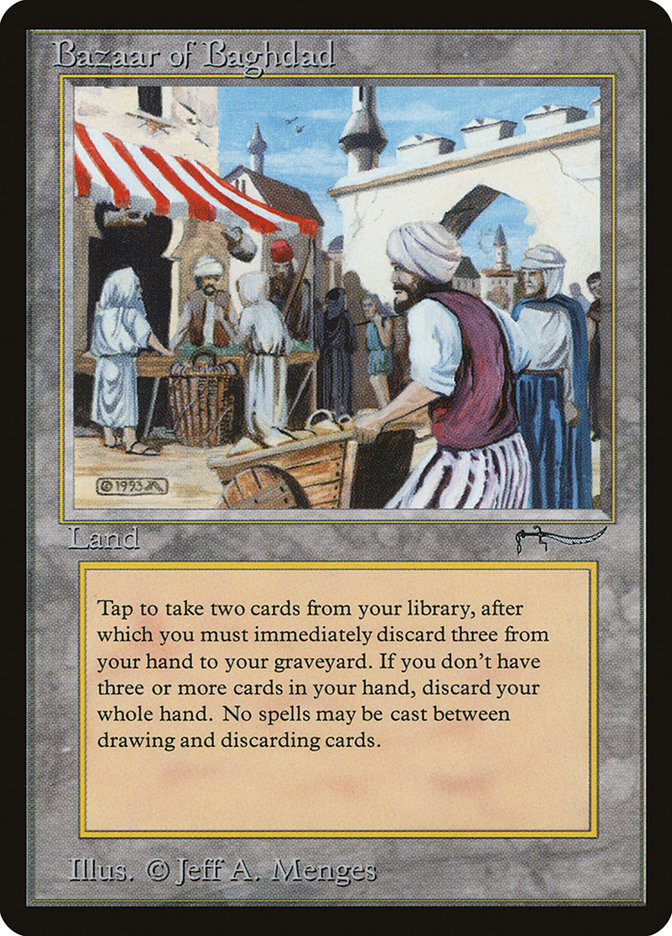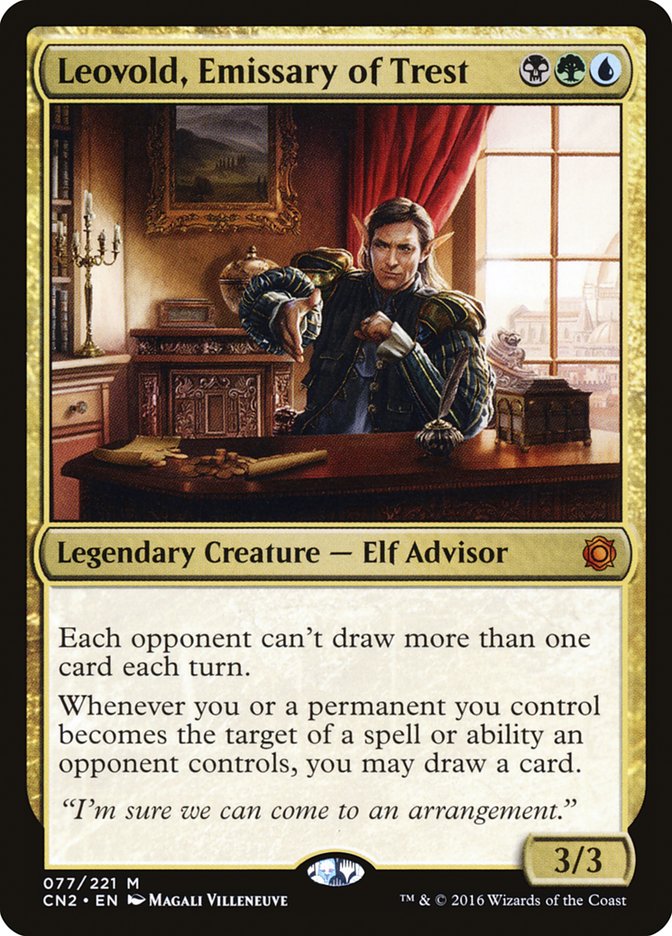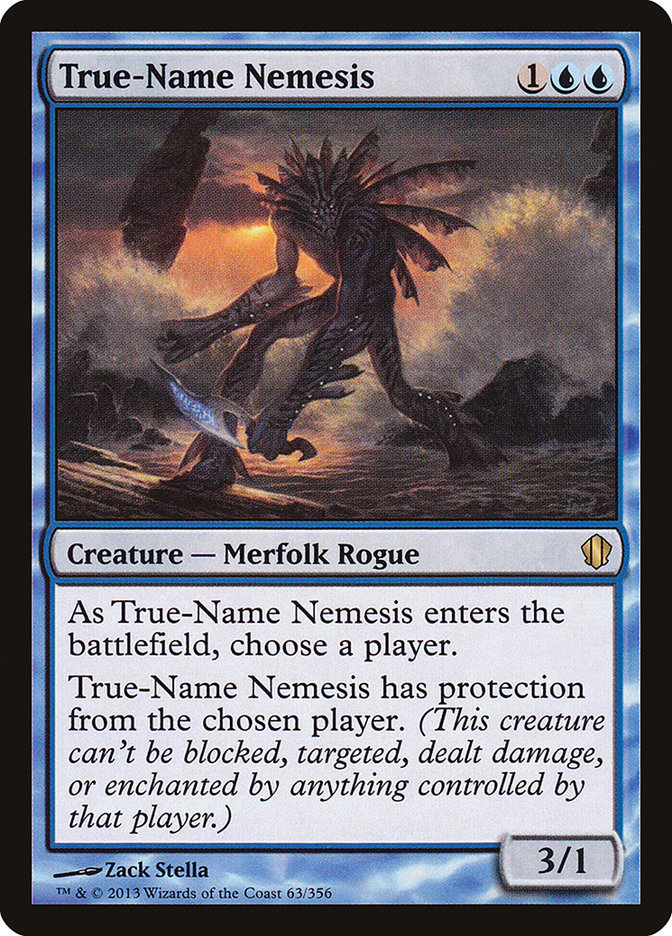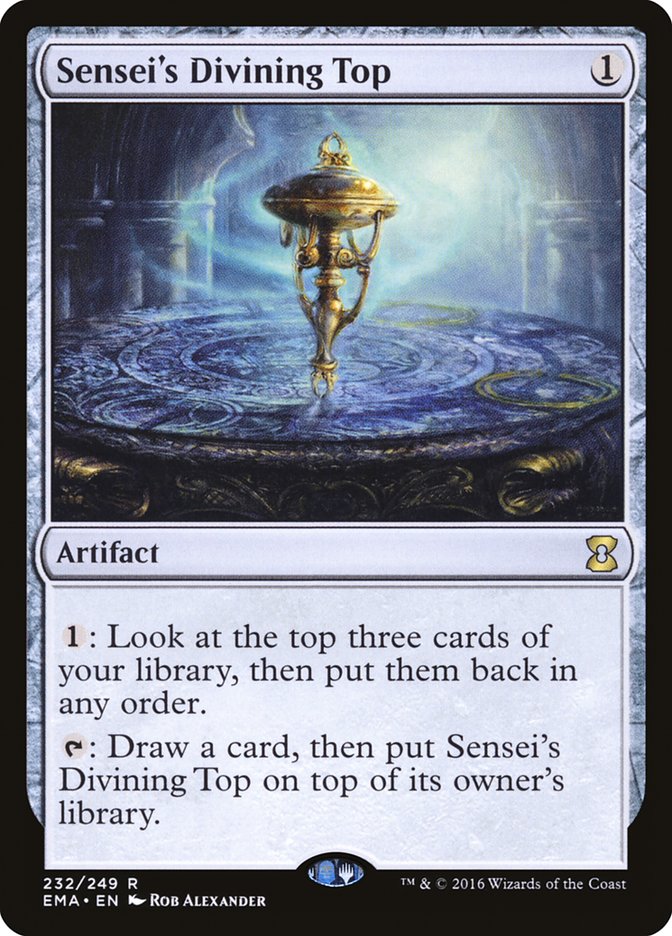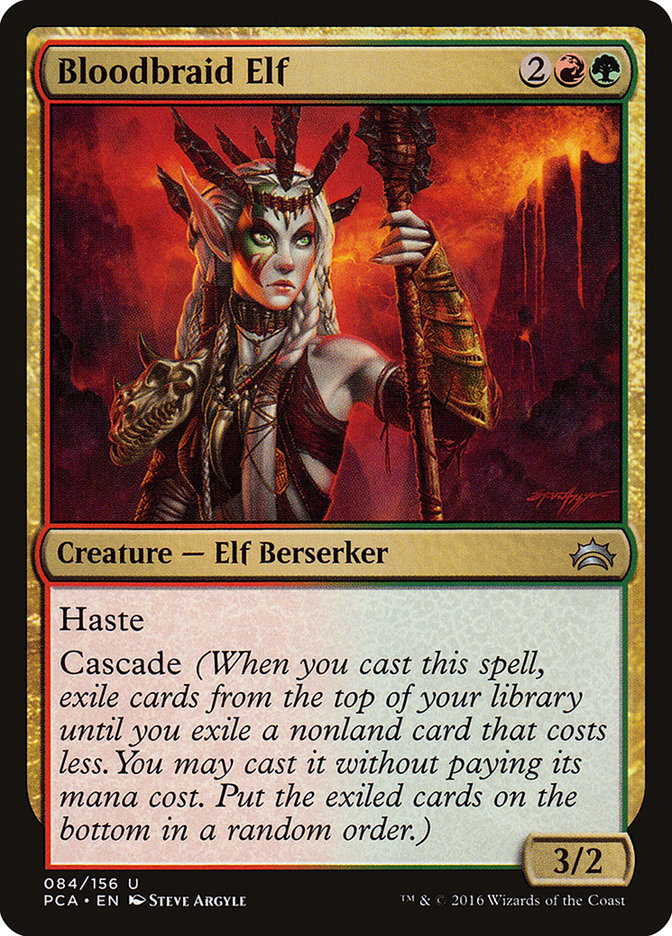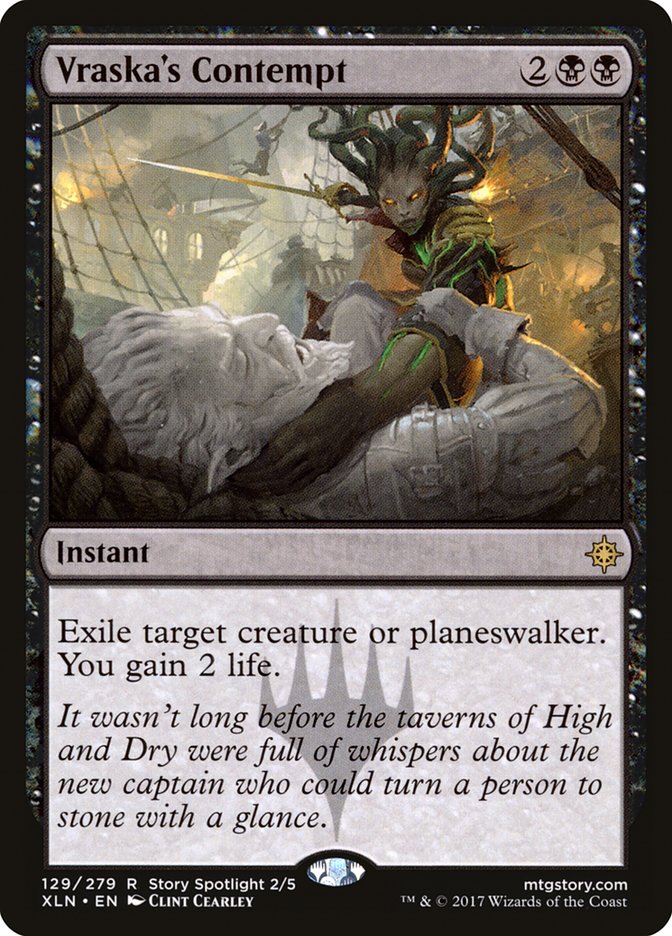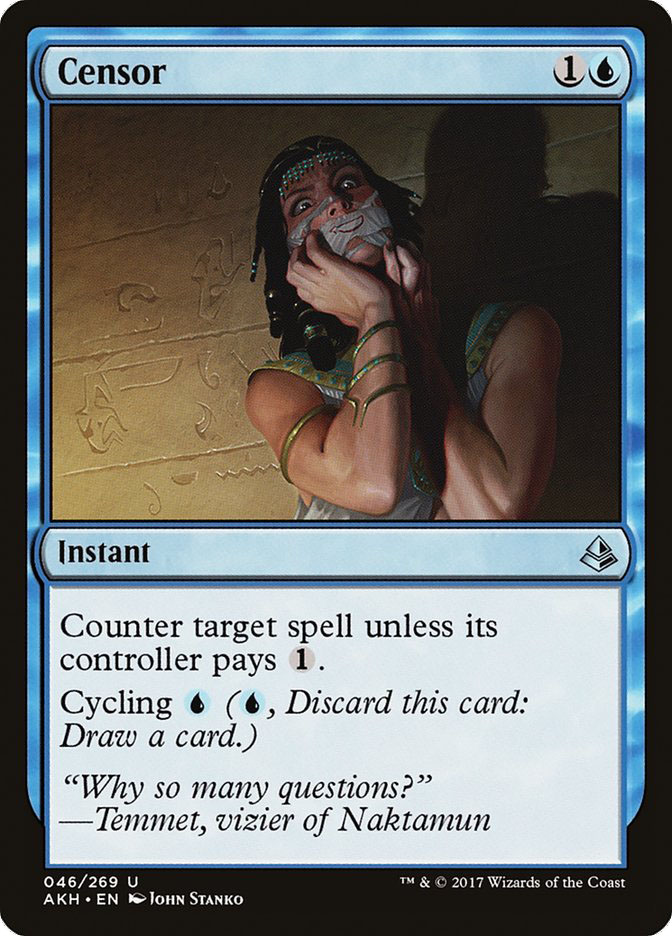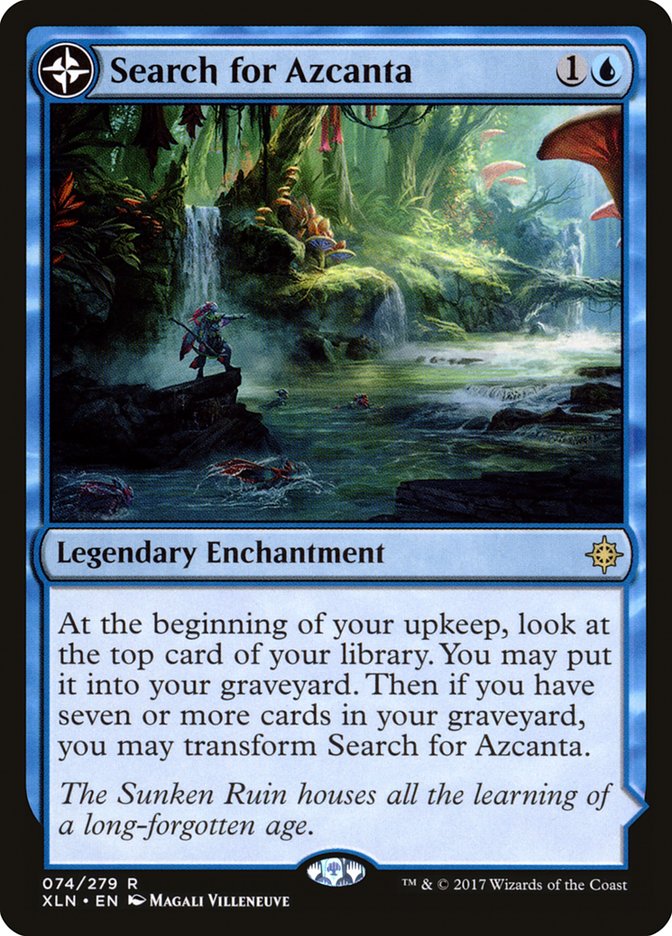During PTs and most GPs, Wizards of the Coast sends someone from R&D to talk to players to get feedback on the current formats or other thoughts the players have. At Worlds, Alli Medwin asked my thoughts on Standard, the recent Limited formats, and anything else I had notes on. Coming off Eternal Weekend and SCG Cincinnati, and playing a lot of Standard and Draft for Pro Tour Ixalan, I thought now would be a good time to go a little further and offer everyone my thoughts on all the competitive formats.
Vintage
Regular Vintage players have gotten mad at me in the past for writing about Vintage without being part of “the Vintage community”/regularly playing Vintage. Maybe that’ll happen again. Whatever.
Vintage is in a weird place where it’s serving a variety of masters/different audiences and uses. Paper Vintage is played by deeply invested collectors, most of whom have been playing the format for twenty-plus years. A relatively large proportion of Vintage decks are painstakingly perfected and decorated with the most expensive versions of the cards available, or at least in accordance with personal taste. In a lot of ways, the decks are more about showing off a collection than playing a competitive strategy game.
I totally get that feeling. I’ve been playing Magic for 23 years, and I grew up slowly acquiring and playing with power. I bought my first Black Lotus when I was around thirteen for somewhere between $150-180. Completing my set of Moxes was extremely satisfying, and to this day, just looking at them makes me happy and nostalgic, which is one of the reasons I prefer playing with my own cards when I Cube Draft, and why I have a powered Cube.
When a lot of the joy of the format comes from nostalgia, major changes aren’t really welcome. More importantly, when you’ve invested several thousand dollars in a deck, you really want to be able to play with it.
Mishra’s Workshop and Bazaar of Baghdad are unquestionably more busted cards that something like half the Restricted List, but they get a pass because somehow they became cornerstones of the format, like Brainstorm in Legacy.
Mishra’s Workshop used to be restricted. I think removing it from the Restricted List was a mistake that they didn’t correct because they stopped caring about the format, and while they weren’t paying attention, it festered into something too many people were invested in.
The other main audiences for Vintage are the viewers of the VSL and current or potential Magic Online Vintage players. For these players, I believe the format would be far better and more interesting if Workshop and Bazaar were both restricted. A large number of artifacts could come off the Restricted List, and I believe both cards would still see play in decks build around exploiting them; they would just also rely more on the Legacy versions, like Ancient Tomb and Faithless Looting.
I’ve been accused of wanting the format to be all about blue decks. That’s not it at all. I’m not likely to play Vintage either way; I just think the format is better and more other people will play it if the Restricted List makes sense and the most unfair cards come up less often. I can’t believe we need these busted lands to somehow “balance” the format. They may be part of a current “balance,” but that doesn’t make them necessary to balance conceptually.
As to that current balance, the Top 8 of the Vintage Championship contained five Ravager Shops decks and three Oath of Druids decks, and that’s after restricting ever artifact in the format. I really think it’s time to acknowledge the actual problem, which only gets worse every time another artifact is printed. This may upset some portion of paper Vintage players, but I think it opens the format both online and in paper to new audiences who are looking for the experience I think Vintage should be, which this doesn’t look like to me.
Legacy
I somehow didn’t think of banning Deathrite Shaman in Legacy until I heard someone else advocate for it, but the second it was brought up as an idea, it sounded awesome. That card is so stupid. And that was well before four copies appeared in six of the Top 8 decks at the Legacy Championship.
Deathrite Shaman isn’t just too strong; it brutally breaks the color pie and casually invalidates a wide variety of strategies by taking graveyard hate onto its ridiculous package (ways Deathrite could have been printed differently: only targeting your graveyard).
I’ll admit a personal bias on this one. Deathrite Shaman instantly invalidated the Legacy deck I built and loved playing, Zombie Bombardment, but I don’t think that’s a problematic bias. I think the world is much better when weird new decks can show up and have a chance, and by cutting off a wide variety of strategies (anything that uses the graveyard), Deathrite Shaman dramatically reduces the number of options for things that can be done in the format. The problem was only exacerbated by Leovold, Emissary of Trest.
I don’t know if I’m in the minority, but I basically hate everything about Commander products. Conceptually, I like the idea of supporting player initiatives and casual formats. In practice, these cards ruined the format for me.
I think Magic is about finding clever uses for things, and when cards that are too powerful to print in regular sets are printed in a special product that tells me to play them in Commander, I lose all ownership of having found a hidden gem or chosen my own strategy, and the cards don’t feel real. It’s like an entirely different game I have to buy into. Some of them are fun cards to play with in Cube, but I want older formats like Legacy to exist as a place to play all the nostalgic cards I’ve used over the years.
When a Commander-set card (or, in Leovold’s case, a Conspiracy–set card) suddenly shows up without having gone through the gauntlet of Limited play, Standard play, and then being retired into Eternal formats, I just feel like, “Who invited you? What have you done to earn your place here?”
Leovold feels like someone’s busted custom card that people are allowed to play with in Legacy for unknown reasons, like True-Name Nemesis. Basically, I hate the format revolving around cards that aren’t a part of Magic’s history.
Anyway, given that there’s a busted three-mana Sultai Elf, I can’t imagine any reason why you’d play it without Deathrite Shaman, so it just further pushes everyone to play Deathrite Shaman, a card that already showed up far too much.
Like Sensei’s Divining Top before it, there may be another problem lurking just below it (and Brainstorm is always an open debate), but for the moment, I feel like we can’t see whether other changes need to happen because it’s so clear Deathrite Shaman needs to go.
Modern
Basically everyone’s written a hot take on Modern lately. I fall under the camp that it’s great. Brennan DeCandio most recently rehashed the “but I can’t beat/prepare for everything and it all comes down to pairings and getting lucky enough to have grabbed the right sideboard cards” argument.
I don’t think it’s important to be able to beat everything, I don’t think pairings are the only thing that matters, and I don’t think it’s essential that metagaming in the way he means it is a cornerstone of competitive Magic.
If anything, this reminds me more of how Magic was literally intended to be played when it was first imagined, when no one could predict that the Internet would give everyone decklists, or even that anyone would have access to all the cards, and each person you played against would represent a completely new experience. I think that world sounds awesome, and the closer Modern resembles it, the better.
With Modern as diverse as it is, we don’t see good players failing to win as a result. It’s still Magic and the games are still interesting and skill-intensive. As someone who argued against the Modern Pro Tour in the past, I actually welcome it now, because I think the format is in a healthy enough place to stand it. The problem is that the PT collapses the format by telling everyone which few decks are the best; if that happens, maybe Brennan gets a format he likes at the end of it, and if it doesn’t, to my mind, we’ve fixed the problem, and I think it’s nice if we have a format that’s about a different skill from Standard.
As for changes to the Banned List, I’m always open to unbanning Bloodbraid Elf (firmly in the camp that it was a missed shot that was supposed to hit Deathrite Shaman the first time). The danger is the interaction with Kolghan’s Command, but honestly, at this point that deck just sounds sweet. I know people feel very strongly about Jace, the Mind Sculptor being too good. I could be wrong, but I actually think it’s fine. I hope, at the very least, R&D does some internal testing with Jace decks to make a decision about it. I could see banning Dryad Arbor and unbanning Green Sun’s Zenith, but I’m not really sure why that would be a good idea, aside from the fact that it incidentally bans the horrific foil Dryad Arbor from From the Vault: Worst Graphic Designs that looks like a Forest.
On an “unlikely, but we can dream” note that’s still way more realistic than “ban all the fetchlands” (which I’d still love), I’d definitely like to see the white-bordered Core Sets removed from Modern. A decent part of the reason the line was drawn there was that “new card face = legal” was an easy distinction, but I think adding “white border = not legal” is a pretty clean fix to remove cards that don’t in any way feel like part of “modern” card design.
Standard
This particular Standard format is kind of doomed based on having too many linear non-overlapping strategies in the sets that are legal. If you want to play some energy cards, you’re playing the well-defined energy package as the core of your deck. Maybe you can find a couple of utility spells from other sets, but most of your deck is set in stone. Combine that with a tribal set that basically doesn’t use creatures from the other sets in Standard and you have a format where, instead of playing with a bunch of Legos and putting them together however you want, you have to decide whether you’re going to play Lego or Duplo.
On top of that, I don’t even know what’s going on with this U/B Control deck. Like, I’m not saying it’s too good for Standard, but it’s definitely literally exactly what R&D has been telling us shouldn’t exist in Standard for the last decade or more. It’s a curve counterspell deck that couldn’t care less what the text box on your cards say with extremely versatile answers and cards that are extremely powerful at filling every role you could possible want in a hard control deck:
Efficient removal: Fatal Push is the literal best ever black card at this.
Versatile removal: Vraska’s Contempt isn’t about to show up in Legacy, but it’s at the top end of the range for this kind of effect in Standard and it’s positioned to be exactly what control decks would want in this format. It needed to be to keep Hazoret the Fervent from dominating everything, but the result is a control deck with all the tools.
Counterspells: Disallow is a replacement-level-playable three-mana counterspell. The problem is having Essence Scatter and Negate at the same time as the real offender, Censor, which lets people incidentally hit a critical mass of counterspells to function as a curve counterspell deck, yet combines with hard counters to invalidate playing around it, especially since, if you play around it, you’re not choosing to play off-curve to blank a card in their hand. You’re just telling them to cycle it.
Card Advantage: Hieroglyphic Illumination and Glimmer of Genius are good cards, but not busted. Search for Azcanta, on the other hand, is at least at the Bitterblossom level as an engine for a control deck, except where Bitterblossom definitionally ended things, Search for Azcanta just incentivizes you both in deckbuilding and gameplay to trade resources and prolong things as much as possible, making the game as “unfun” as possible for your opponent. I’m definitely not looking forward to being on the wrong side of Search for Azcanta in a feature match at a Pro Tour and spending each of my turns thinking about whether I should concede or play out the game for my .01% chance of winning, since it’s a match in a Pro Tour.
Finishers: Torrential Gearhulk and The Scarab God are beyond respectable. These are some snap-include, high-pick Cube cards, which I think is an amusingly defining trait of a strong Standard finisher.
Ixalan Limited
Coming off a fantastic Limited format, Ixalan had some big shoes to fill, and, I’ll say it:
It failed spectacularly.
Before the set was even officially released, pros were already bashing the format on Twitter. I thought it seemed a little premature, and we should give it a chance, but I understood some defining weaknesses, or at least risks, of the format.
After playing with it more, I think it’s basically every bit as bad as they said.
It says a lot that I thought Owen had a sweet deck in the first draft in Worlds, given that the entire reason it was sweet was that it could legitimately be referred to as a control deck. That’s it. Control decks were just such a novelty in the format that it seemed cool that he even tried.
This isn’t even like a format with exert or bloodthrist where there’s some mechanic that makes attacking strong; there just isn’t enough cheap removal. Beyond the difficulty killing a creature, the bounce spells are weak and expensive, so the result is that the Auras, which are at the top of the normal power curve, have nothing to keep them in check. Original Innistrad was a great Limited format, but I don’t think anyone thought Spectral Flight was the reason it was so great.
Beyond that, none of the cards do anything interesting. The special mechanics are extremely vanilla, and where they hinted at build-around cards like Rile and Lurking Chupacabra, in reality, not enough cards actually have the mechanics they’re looking for to be able to get a deck that uses them to come together more than 20% of the time that you try to, which means it’s never really worth trying.
The consequence of putting cards to support failed linear strategies in the set is that there end up being a bunch of useless cards in the pack. Personally, I think the best sets are the deepest ones, where almost every card is playable in the right circumstance, because I think it means more of your picks toward the end of the pack are relevant and interesting and I think it gives you more time to maneuver in the draft.
I know there are others who prefer fewer playable because it “rewards reading the draft” or “forces players to get scrappy with bad cards,” but I think it does the opposite of rewarding reading the draft. I think it narrows the window where you can move around and find your spot, and forces you to commit and hope earlier, especially in a format as linear as this one.
Basically, I don’t think you can afford to put blank cards like Hierophant’s Chalice in a tribal set. Tribal sets need all the space available to make decks work and allow players flexibility in the draft.
I kind of shifted topics from my “none of the cards do anything interesting” note; this isn’t just about drafting and deck building. The games are just vanilla creatures and tricks. To some extent, that’s “pure Magic,” but really, it just feels oversimplified. The lack of real text boxes mostly serves to remove, or rather, fail to create any alternate strategies, and we’re left with the basic dynamic of evasion / likelink / large size and how tricks impact racing with these cards. Anointed Deacon basically creates its own alternate gameplan just by being the only creature that does something other than attack and block.
Verdict
If Ixalan is the relevant measure of the current state of Magic, I give it a particularly low grade as a set. I think creative did a pretty good job, and I think the flip lands are fantastic in concept and execution (except for development notes on Search for Azcanta), but ultimately, I don’t think the gameplay is there for Limited or Standard. It needed better definition in Limited, as well as better interaction, and more integration in Standard.
To some extent, this is Kaladesh’s fault, but it’s likely that the creature types needed to be chosen or seeded to interact better with the rest of Standard. I get the Dinosaurs probably had to come out of nowhere to get full effect, but it’s awkward to use Merfolk after a Desert-themed set where you can’t seed them, when it’s normally a creature type that could have some support in Standard, as an example. If the other types all had support built into other sets, Ixalan could just focus on making Dinosaurs playable, and we could suddenly have a bunch of supported tribes, but when they’re basically all being introduced from scratch aside from Kari Zev, Skyship Raider and a few random Vampires, Ixalan has too much work to do to support any of them, and doesn’t integrate with the rest of Standard, and the result is that it feels like Block Party.
All of this means that, contrary to Brennan, I think now is the perfect time for a Modern Pro Tour (literally now; with Worlds having already showcased Ixalan, I think Albuquerque would have been the perfect time for a Modern Pro Tour, but unfortunately, we have to wait).


